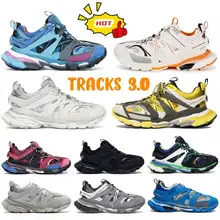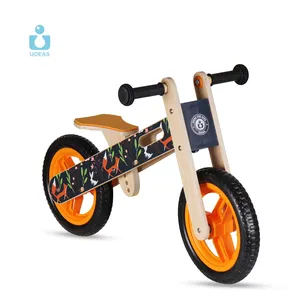The Definition of Bicycles
Bicycles, a form of non-motorized transportation with a long history, come in various designs to cater to different needs and preferences. Comprising a frame, two wheels, pedals, a handlebar, and a seat, bicycles can also feature additional components like gears, brakes, and lights. They cater to a broad spectrum of users, from children mastering cycling to adults using them for daily commutes or leisure pursuits.
The fundamental principle of bicycles is simple: riders propel the vehicle by pedaling, which rotates the wheels via a chain and a gear mechanism. Steering is managed through the handlebars, while braking is typically achieved by hand-operated levers that apply friction to the wheels, enabling riders to decelerate or halt. Designed for efficiency and user-friendliness, bicycles rely solely on the rider's energy to move forward.
For both businesses and consumers, bicycles symbolize a sustainable mode of transport that fosters health and fitness. They are versatile machines that can be personalized with various accessories to enhance functionality and enjoyment. The global bicycle market caters to diverse requirements, offering options tailored to different terrains, user preferences, and intended uses.
Varieties of Bicycles
The array of available bicycles is extensive, each tailored to meet specific demands and riding conditions. Here is an overview of some common types:
-
Mountain Bikes: These bikes are constructed to navigate off-road trails and rough landscapes, typically equipped with wide knobby tires for optimal traction, flat or riser handlebars for control, and suspension systems to absorb impacts from bumps and rocks. Variants like cross-country, trail, and downhill models cater to the distinct requirements of each discipline.
-
Road Bikes: Also known as racing bicycles, these are engineered for speed and efficiency on paved roads, featuring narrow tires, drop handlebars for various hand positions, and lightweight frames. Ideal for long-distance journeys, competitive racing, and recreational rides.
-
Hybrid Bikes: Offering a blend of road and mountain bike elements for a comfortable and effective ride, hybrid bikes typically feature flat handlebars and medium-width tires, making them suitable for both urban commuting and recreational riding on diverse terrains.
-
BMX Bikes: Tailored for extreme sports, BMX bikes boast robust frames and smaller wheels optimized for jumps and tricks, commonly favored by children and teenagers in skate parks or urban environments.
-
Folding Bikes: Compact and portable, these bikes are perfect for urban settings where space is limited. They can be easily transported on public transit or stored in small living spaces or offices.
-
Touring Bikes: Designed for long-distance travel, touring bikes feature sturdy frames, multiple hand positions, and provisions for panniers or racks. Popular among bicycle tourists and commuters needing to transport gear over considerable distances.
Choosing the Right Bicycle
Choosing the appropriate bicycle is crucial for businesses catering to cyclists' needs. When selecting bicycles for resale or commercial purposes, consider the intended usage—whether for racing, commuting, off-road adventures, or as fleet bikes for establishments like hotels or resorts with cycling amenities.
Materials such as aluminum alloy, carbon fiber, steel, titanium, or magnesium alloy offer distinct advantages in terms of weight, durability, and cost. For instance, aluminum alloy is lightweight yet robust, ideal for high-performance racing bikes, while steel is renowned for its durability in urban settings.
The braking system is another key consideration; from standard V brakes to advanced disc brake systems offering enhanced stopping power and performance in various conditions. Disc brakes are especially beneficial for off-road or mountain bikes where reliable stopping is essential.
Gearing plays a vital role in a bike's performance across different terrains. More gears provide greater adaptability in diverse riding conditions, such as hills or rough landscapes, making them preferable for businesses catering to customers with varied cycling needs.
Lastly, factor in additional features that may attract your target market, such as gender-specific designs, integration of smart technology, or foldable designs for convenient storage and transportation.
Bicycles on Alibaba.com
Alibaba.com is a leading global B2B e-commerce platform that connects businesses with an extensive network of suppliers offering a wide range of products, including high-quality bicycles suitable for various commercial applications. With over two decades of experience in facilitating international trade solutions, Alibaba.com has become a vital resource for small and medium-sized enterprises seeking to expand their business operations.
The platform's intuitive interface enables buyers to refine their search based on specific criteria like material composition, gear specifications, fork types, and more, ensuring they find the perfect match for their commercial needs. Additionally, Alibaba.com's Trade Assurance service provides an extra layer of security by safeguarding payments until buyers confirm satisfactory delivery.
Opting for Alibaba.com for wholesale bicycle procurement opens up a world of opportunities where diversity meets reliability. The platform's commitment to assisting businesses in navigating the complexities of global trade makes it an ideal partner for sourcing bicycles to keep your fleet rolling smoothly across cities worldwide.
Common Queries about Bicycles
Available Fork Materials for Bicycles
Bicycle forks are crafted from a range of materials like aluminum alloy, steel, carbon fiber, and magnesium alloy, each offering a different blend of weight, stiffness, and damping properties to suit various riding conditions.
Selecting the Right Fork for Your Bicycle
Choosing the appropriate fork depends on your cycling intentions, whether it's mountain biking, road cycling, or casual riding. Consider the terrain, suspension requirements, and material preferences to align the fork with these specific conditions.
Significance of Fork Suspension on Bicycles
Fork suspension, present in mountain bike forks or shock absorbers on full-suspension bikes, can significantly enhance rider comfort and control by absorbing trail irregularities and impacts.
Bicycle Forks Tailored to Specific Bicycle Types
Indeed, there are bicycle forks tailored for distinct bicycle types such as road bikes, mountain bikes, and electric bikes, each potentially featuring specific attributes like aerodynamic designs or robust construction to accommodate different riding styles.
Compatibility of Bicycle Forks with Different Brake Systems
Most modern bicycle forks are designed to be compatible with both disc brakes and rim brakes; however, it's advisable to verify this with the manufacturer to ensure proper fit and performance.
Differentiating Rigid and Suspension Forks
Rigid forks lack suspension systems, making them lighter and more efficient on smooth terrain, while suspension forks possess shock absorption capabilities ideal for off-road riding that necessitates a smooth ride over bumps.
Comparison of Mechanical and Hydraulic Fork Suspension
Mechanical systems rely on physical compression or part movements like bushings and springs to absorb energy, whereas hydraulic systems utilize pressurized fluid to dampen vibrations and impacts for a smoother ride.
Importance of Weight in Bicycle Fork Selection
The weight of a bicycle fork is crucial as it impacts the bike's handling and responsiveness. Lighter forks are typically preferred for racing and fast-paced cycling, while heavier options may cater to riders prioritizing stability.
Desirable Features in Racing Bike Forks
For racing bikes, seek bicycle forks with aerodynamic designs, lightweight construction, and precise handling characteristics to optimize speed and control during races.
Effect of Fork Geometry on Bicycle Performance
Fork geometry, including the head angle and rake, influences how the bike maneuvers. A steeper head angle offers agile steering for tight spaces, while a slacker angle provides stability at high speeds, ensuring predictable handling.
Understanding Smart Bicycle Forks and Their Functionality
Smart bicycle forks may incorporate electronic components like sensors or Bluetooth connectivity to provide riding data or adjust settings wirelessly for enhanced performance.
Selecting Pedal Types for Bicycle Forks
Consider rider comfort and intended use when selecting pedal types; options range from bead pedals, lighter but less comfortable, to traditional platform pedals offering greater stability.
Significance of Range per Power (RPP) in Electric Bicycle Forks
Range per power dictates how far an electric bicycle can travel on a single charge. Choose a fork with a suitable RPP based on the anticipated distance and terrain of your electric bike journeys.











































 浙公网安备 33010002000092号
浙公网安备 33010002000092号 浙B2-20120091-4
浙B2-20120091-4